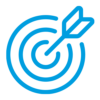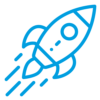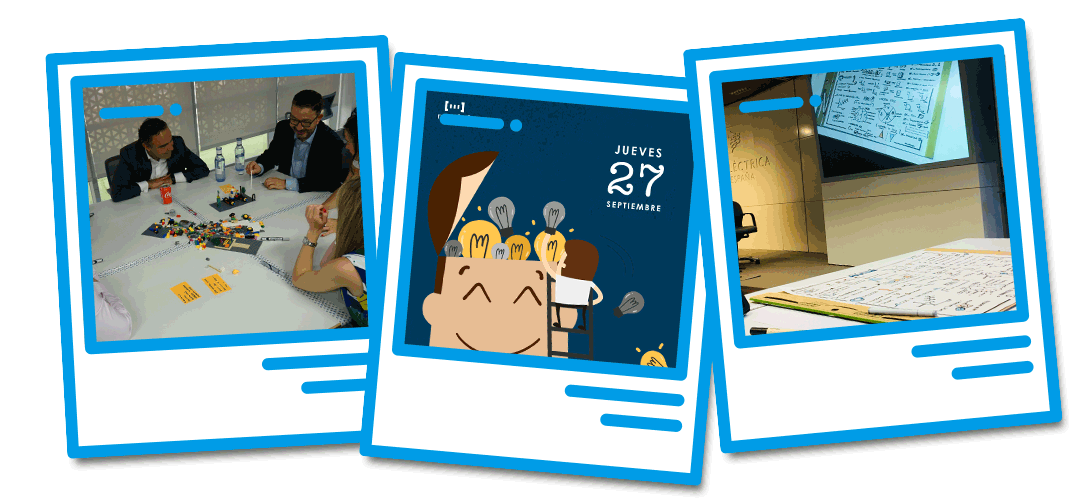Digital Talent Service
Success Case
Client
Electricity System Operator
Number of Employees
1600 +
Solution
Lead Netminder
Ana Aranda

Client Overview
What is the client’s business, industry, and product or service? Who is the client’s target customer?
Red Eléctrica de España (REE) transmits and operates the electricity system in Spain. As part of The Paris Agreement, REE is committed to playing a fundamental role in the fight against climate change, which requires “tackling a radical transformation in the architecture of the electric system.” To accomplish this, the company needed to innovate more than ever before, increasing flexibility and efficiency. So, they launched a digital transformation.

Context
What initiative was the client looking to address?
In order to foster and accelerate the transformation, REE began the process with a reorganization of their IT department. The challenges they faced were sub-divided in three main areas:
- Organizational: Creation of a new unified IT Department, known as DTI, to integrate all the previous IT units in the company.
- Functional: The new DTI was born with the mission of increasing its maturity level and becoming a real business partner to help the company achieve its strategic goals.
- Digital: The DTI area will lead and promote the Digital Transformation for all of REE.
DTI defined the development of internal talent as one of the key strategical pillars to drive his transformational process.

Target Audience
What was the participant profile? What team, department, or area did they people belong to? How does this team, department, or area fit into the organizational structure?
Netmind worked with all the staff and management in the new IT Department (DTI), which included four sub‑departments:
- Infrastructure and Operations
- IT Planning and Management
- Control Systems
- Information Systems

Objectives
What objectives was the client looking to achieve? Were there high-level initiatives or goals that motivated the client?
- Verify each employee’s level of competence in the context of duties and responsibilities assigned, and then facilitate their professional development if needed.
- Identify the strengths and weaknesses of DTI’s capabilities as a whole to help anticipate talent development needs.
- Promote a cultural change based on the active and continuous learning of DTI professionals.

Solution
What solution did we propose to accomplish their objectives? How was the program structured? What were the contents of the program? What was Netmind’s role in the solution?
REE expedited the project by using the European e-CF and ICT Professional Role Profiles, which enabled them to start with a recognized standard.
Building on this foundation, Netmind helped facilitate REE’s digital transformation through the following four actions:
Competency Profile Definition
The first action was to define the specific competence requirements of the existing IT roles, as well to identify and define the new roles needed by the DTI. This also included:
- Defining the strategic knowledge areas in which to group the competencies.
- Creating a Dictionary of Competencies based on e-CF.
- Creation of the DTI Competency Profiles (based on current and future roles).
- Defining and documenting the Competency Assessment Model.
New Training Portfolio Design
Based on the analysis of the competence profile for each role and the proficiency of the people who perform the roles, training and development plans and paths were designed to:
- Foster the knowledge and skills needed.
- Bridge the individual skill gaps for the current roles.
- Increase the versatility of each person in the DTI.
- Globally train all staff in competencies related to new IT management trends and disruptive technologies.
Competency Assessment Delivery
With the customized e-CF model, REE carried out an online self-assessment process for each person in the DTI. In this self-assessment, employees evaluated not only their competence levels, but also their knowledge and skills associated with each competence. This process included:
- Designing and automating the Competency Assessment Questionnaires (tool).
- Developing an evaluation tool to automate the Competency Assessment.
- Performing Individual Skill Evaluation Reports for each professional.
- Performing the Global Skills Assessment Report for the whole area.
- Compiling assessment results into individual Competency Profile Reports.
Individual Development Plan Creation
Using the Competency Profile Reports, managers conducted Competency Assessment Interviews with each employee to qualify and/or complete the self-assessment content. With both the quantitative and qualitative assessment data, REE was able to identify specific training actions needed to achieve the professional development goals for each person in DTI. This action required:
- Preparing Individual Development Plans, including an itinerary of developmental actions for each employee to take.
- Conversations between managers and professionals to agree on their development expectations and needs.

Outcomes
What value did we deliver to the client? Which problems did we solve? How has the solution changed the client’s way of working?
This project culminated in the design and delivery of Training and Development Plans, both individual and collective, that were delivered over a two year period. Additionally, a PUSH initiative was designed that included series of seminars for all DTI staff and workshops for all managers to help the advance their knowledge in transformation and technology trends.
Transformation
- Agile
- Innovation
- Organizational Design
Technology
- Big Data
- IoT
- Cloud
- Cybersecurity
By utilizing the e-CF model as a baseline and enriching it with the knowledge and skills associated with their development plans, REE was able to incorporate several improvements into the IT organization and its related functions:
- Homogenize profiles that perform similar functions among the different departments within the DTI.
- Modify the internal distribution of roles and responsibilities after identifying profiles that required a very high number of skills.
- Implement an IT talent management process in collaboration with the HR area, which has proven a very effective approach to enrich the final result.
- Identify and justify the training activities needed to develop the DTI internal talent according to the strategic organizational goals.

Next Steps
What future goals does the client now wish to accomplish? How will the expand on what they have learned/implemented?
Any next steps?

Lorem ipsum dolor sit amet, consectetur adipiscing elit. Ut elit tellus, luctus nec ullamcorper mattis, pulvinar dapibus leo.

Lorem ipsum dolor sit amet, consectetur adipiscing elit. Ut elit tellus, luctus nec ullamcorper mattis, pulvinar dapibus leo.

Lorem ipsum dolor sit amet, consectetur adipiscing elit. Ut elit tellus, luctus nec ullamcorper mattis, pulvinar dapibus leo.

Lorem ipsum dolor sit amet, consectetur adipiscing elit. Ut elit tellus, luctus nec ullamcorper mattis, pulvinar dapibus leo.
Can we help you solve a similar problem?
